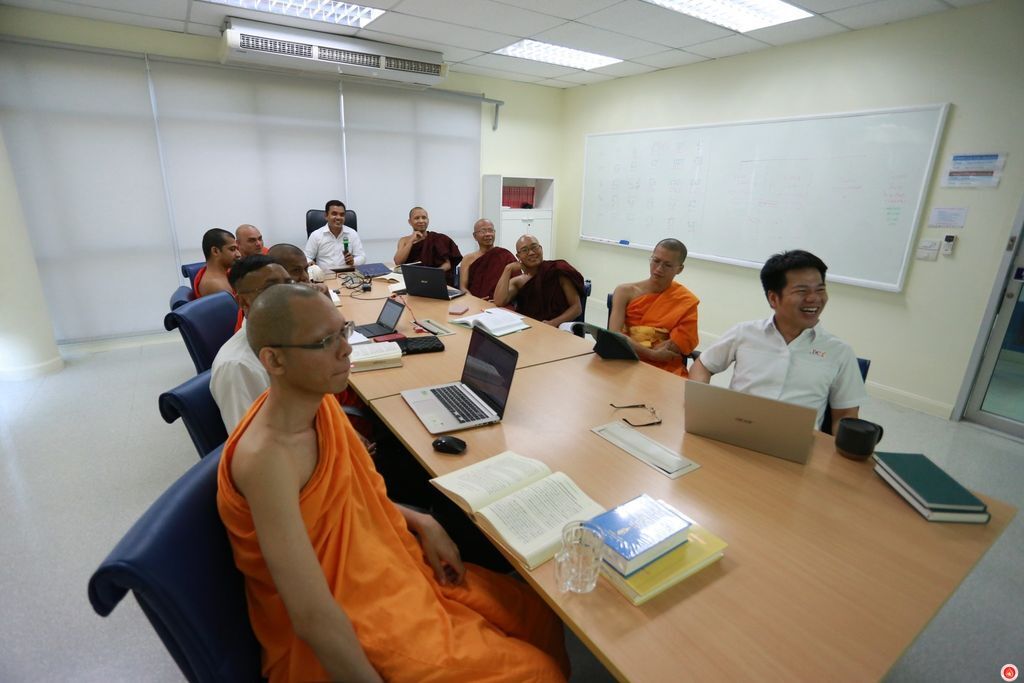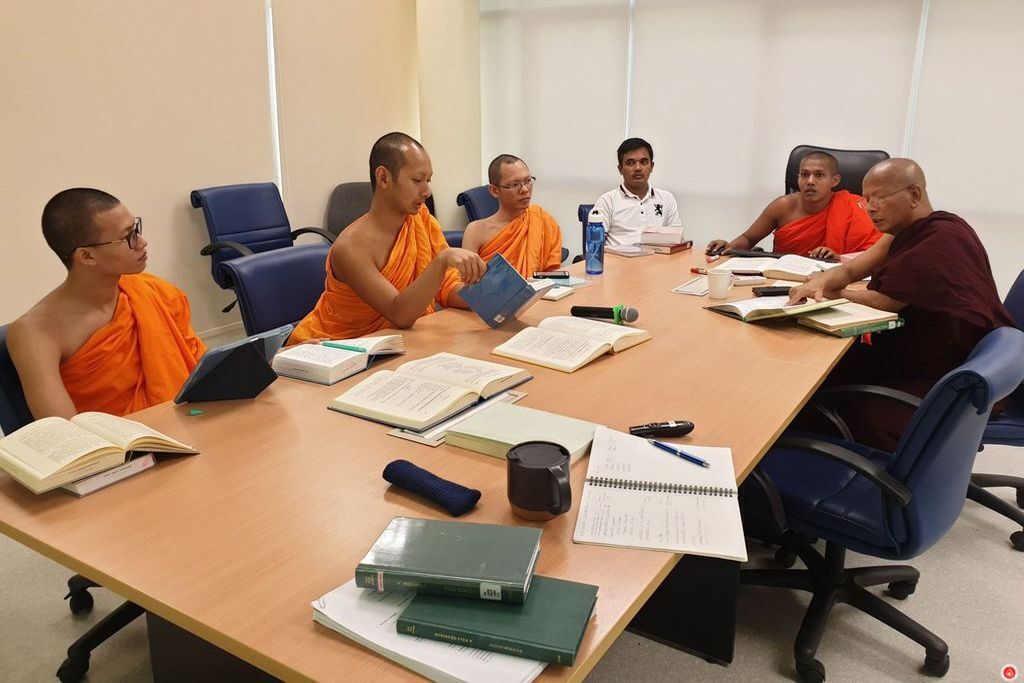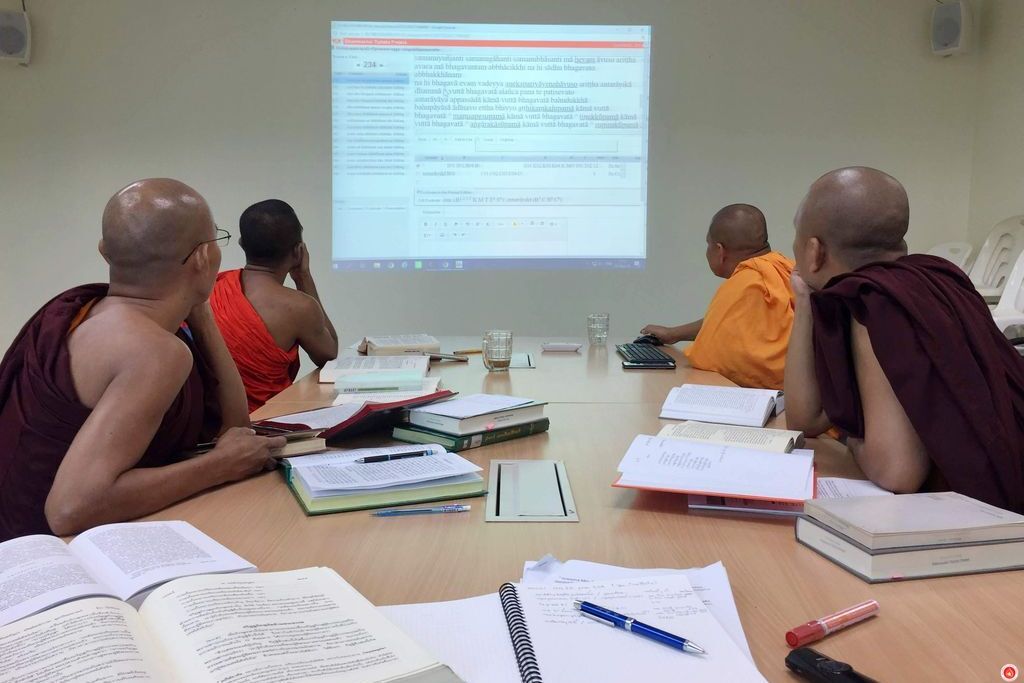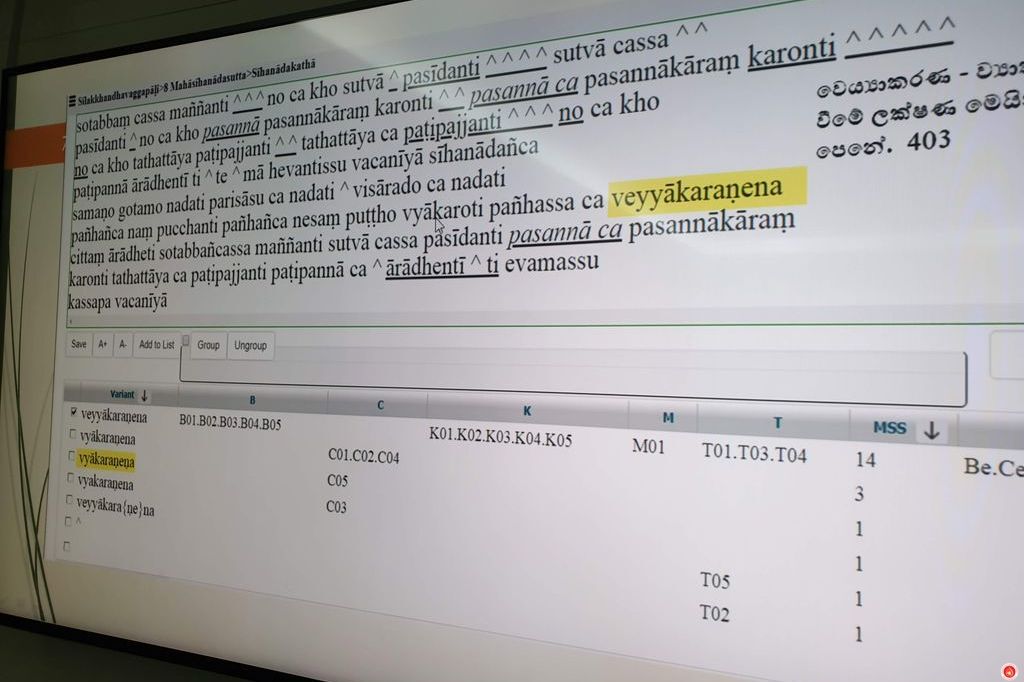Tipiṭaka Research Center (TRC)
The Tipiṭaka Research Center (TRC) operates as a dedicated research unit within the Dhammachai Tipiṭaka Project (DTP). Comprising a diverse team of researchers specializing in Buddhist scriptures and the Pāli language, our team includes both ordained monks and lay scholars from various countries, including Thailand, Myanmar, Sri Lanka, India, Japan, and the United Kingdom.
Our primary mission at TRC is to meticulously curate and select representative manuscripts from all the different manuscript traditions of the Pāli canon. We aim to utilize these carefully chosen manuscripts as the foundation for creating a new, comprehensive critical edition of the Pāli canon. This ambitious endeavor is carried out through a rigorous process of textual criticism, integrating insights from the four major printed editions—PTS, Chaṭṭhasaṅgāyanā, Syāmaraṭṭha, and Buddhajayanti editions.
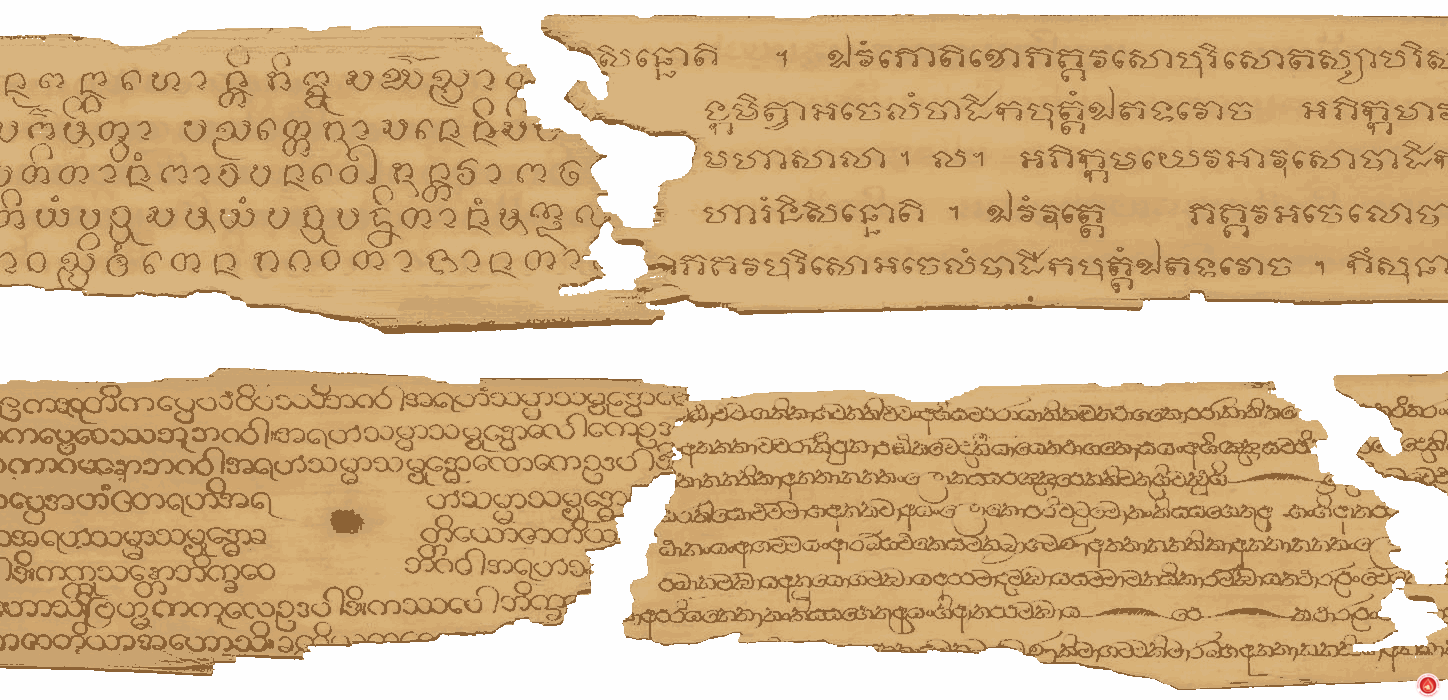
Selecting representative manuscripts from the extensive collection acquired from all Theravada countries is an immense effort. To begin, these manuscripts are categorized into major groups based on their scripts, which encompass Sinhalese, Burmese, Khom, Tham, and occasionally Mon scripts.
Within each script tradition, TRC members undertake the intricate task of further dividing the manuscripts into sub-groups. This process involves a careful examination of various internal and external factors, such as manuscript age, geographical origin, variant readings, and abbreviation styles. Typically, our experience reveals that each major manuscript tradition comprises 2 to 3 sub-groups of manuscripts.
From these sub-groups, we select representative manuscripts, often prioritizing the oldest among them, to serve as our primary editorial materials. Consequently, for each tradition, we may choose up to 5 representative manuscripts. This comprehensive approach results in the selection of approximately 20 to 25 representative manuscripts, essential for preparing a single book within our series.
In the production of a critical edition, we employ a specially designated database system known as the 'Indic Text Analysis Program (ITAP).' Within this system, researchers initially edit the text, and a final round of editing is performed by a chief editor. During the editing process, we facilitate weekly discussion groups to address editorial challenges and exchange ideas among the team, particularly regarding variant readings and editorial policies. Researchers also present intriguing or perplexing issues at an annual seminar, during which our prominent advisory members provide guidance and solutions for unresolved matters.
Once all variants have been meticulously finalized, the new edition becomes available in both printed and online formats under the title of the Dhammachai Tipiṭaka Edition. This edition serves as a valuable reference for discrepancies among various Tipiṭaka palm-leaf manuscripts and printed editions including the European Pali Text Society edition (Ee), the Burmese Chaṭṭhasaṅgīti edition (Be), the Thai Syāmaraṭṭha edition (Se), and the Sinhalese Buddhajayanti edition (Ce).
We expect that the Dhammachai Tipiṭaka Edition will serve as a common ground for scholars worldwide to engage in discussions and knowledge exchange related to the Pāli canon. Moreover, this collaborative effort results in a critical edition of the Pāli Tipiṭaka, significantly advancing the field of Buddhist Studies. Our ultimate goal is to create the most accurate and comprehensive digital Tipiṭaka ever, undoubtedly marking a significant milestone in the study and research of early Buddhism.
